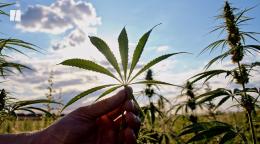The accessibility of marijuana products has expanded rapidly in recent years. In 2017, medical marijuana was legal in 30 states and Washington, D.C., and recreational marijuana was legal (for adult use) in eight states and the District of Columbia. After the elections in November 2022, recreational marijuana became legal in 21 states, D.C. and two U.S. territories.
These changes to the law have benefits for families, freeing them from the punishing limitations that drug convictions impose on education, employment and housing options. Parents in this growing number of states will no longer be separated from their children and incarcerated for the crime of possessing marijuana.
An unintended consequence of legalization and expanded access, however, has been an exponential rise in accidental ingestion of cannabis products by children. In 2017, 207 ingestions in children younger than 6 were reported to the National Poison Data System. By 2021, this number ballooned to 3,054 cases — an increase of 1,375%. Almost all of the ingestions occurred in someone’s home (98%). Twenty-three percent of these patients ended up being admitted to the hospital.
“Most of the edible cannabis exposures reported to poison centers are due to that less-than-5-year-old age range,” Kaitlyn Brown, clinical managing director of America’s Poison Centers, told HuffPost.
Here is what parents need to know about the dangers that marijuana edibles present for children and how to help keep kids of all ages safe.
What are the active ingredients in edibles?
The component of marijuana that makes you feel high is called tetrahydrocannabinol, or THC. It is known as the psychoactive ingredient. When you purchase edibles, the packaging should indicate the percentage of THC in the product.
“THC gummies or edibles can contain more than 20% THC,” Dr. Gary Goodman, medical director of the pediatric intensive care unit at Children’s Hospital of Orange County at Mission Hospital, in Southern California, told HuffPost.
Another component of marijuana on the market is , or CBD. CBD does not cause symptoms of a “high” and is not addictive, whereas THC can be addictive for some people. CBD can be used to treat certain medical conditions, like some childhood seizure disorders, and some people believe it has an anxiety-reducing effect. It is available legally throughout the country.
, whose packaging mimics well-known brands of regular candy, chips or other snacks, can cause further confusion. “Some states have legislation that doesn’t allow products to be marketed in that way; other states don’t,” Brown said.
“You can have the kids that just aren’t acting right,” said , a pediatrician practicing in Indiana. “They can stumble; they can have speech problems.”
If you believe your child has ingested cannabis edibles, you should call your pediatrician or the Poison Help line: (800) 222-1222. You can also visit for information and assistance. Inquiries to Poison Help are free and confidential.
have shown that teens who use cannabis show cognitive effects such as problems with focus, memory, coordination and reaction time. The AAP recommends against cannabis use for people younger than 21 for these reasons and because young people’s brains remain under development until they are 25. Driving and other kinds of accidents can happen under the influence of cannabis as well, and smoking cannabis poses many of the same risks as smoking tobacco.
H/T: news.yahoo.com



